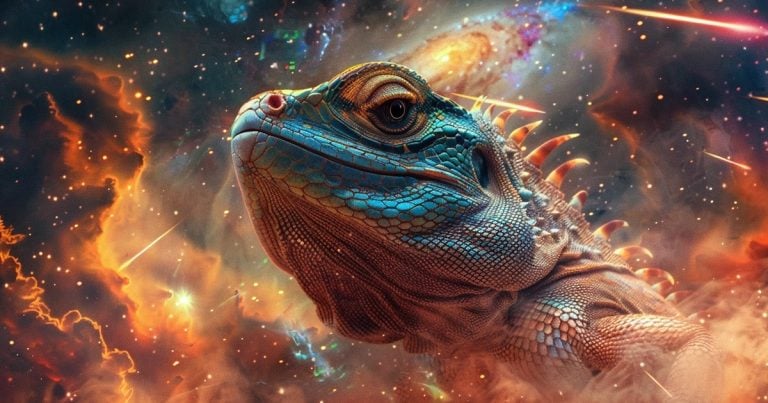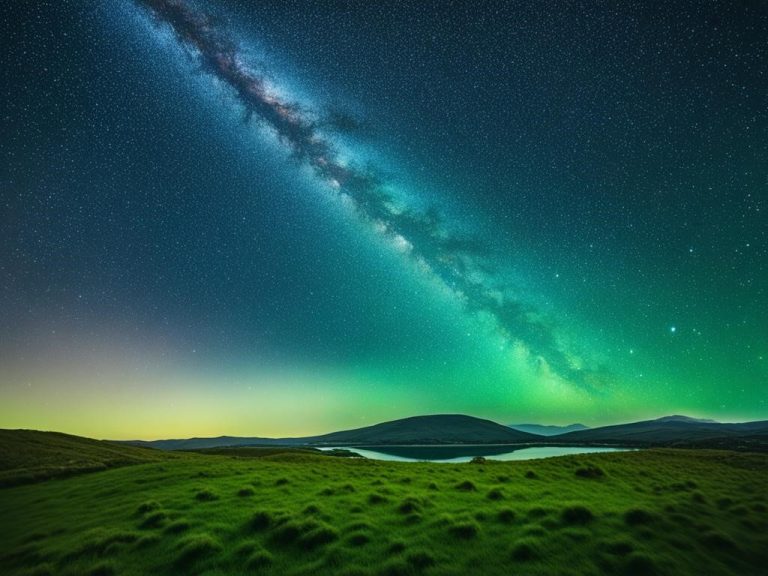Explore the Wonders of Lacerta Constellation
Modified: July 29, 2024 Author: International Star Registry
Welcome to the amazing world of the Lacerta Constellation! Despite being small, Lacerta has many celestial wonders. It is perfect for anyone who loves space or is curious about the universe’s mysteries. Lacerta has a rich history and fascinating celestial objects.
Lacerta is also called the Lizard Constellation and is in the northern sky. The famous Polish astronomer Johannes Hevelius named this area of the sky in the 17th century. Join us on a special journey to learn more amazing Lacerta Constellation facts and its secrets.

Key Takeaways:
- Lacerta Constellation offers a plethora of celestial wonders despite its small size.
- It was named for the lizard by the renowned astronomer Johannes Hevelius in the 17th century.
- Prepare to be enchanted as we explore the captivating history and celestial objects of Lacerta.
Introduction to Lacerta
Lacerta is a mystical constellation named after the Latin word for “lizard.” It stands out in the northern sky. Covering 201 square degrees, it is the 68th largest constellation. You can see it between latitudes of 90 degrees and -40 degrees. This makes it part of the northern celestial hemisphere’s fourth quadrant.
This constellation looks like a lizard. That’s why it’s sometimes called ‘Little Cassiopeia’ for its shape. It stretches from Cepheus’s head to Perseus’s foot. It sits between Cygnus and Andromeda.
If you want to find Lacerta in the night sky, try looking towards the Milky Way. It’s easy to see, making it a great sight for stargazers.
For more about Lacerta, check out seasky.org,constellation-guide.com, or theplanets.org. They have lots of details and pictures.
Exploring the Stars of Lacerta
Lacerta is known for its amazing stars, great for anyone who loves to look at the night sky. In Lacerta, you will see different kinds of stars, clusters, and even galaxies.
In Lacerta, you can find Alpha Lacertae. The brightest star in the constellation has an apparent magnitude of 3.78
There’s also the open star cluster NGC 7243. To the naked eye is appears like a single small star. This object is actually a bright group of blue and white stars that shines with a magnitude of 6.4
To make your star gazing in Lacerta extra special, think about how the stars are connected. The stars together look like a sparkling zig-zag in space.
If you are wishing to name a star in the sky, Lacerta is like a hidden jewel box in the heavens. Visit starregistry.com to buy a star for someone and choose the constellation Lacerta. This constellation is located in one of the most visible areas from the northern hemisphere. When you name a star after someone, you will receive a beautiful International Star Registry certificate and a star chart with the location for your star indicated.
To see more, look at the picture below. It shows the beauty of Lacerta’s stars:
Now you know a bit about Lacerta and its amazing stars. Let’s learn more about its stories and history soon.
History and Mythology of Lacerta
Lacerta’s stories may not be as many as others, but its name brings up images of Earth’s reptiles. Unlike older constellations that are named for Greek Gods and Heroes, there is no Lacerta constellation mythology. Lacerta is named for its unique shape.
In the past, lizards often symbolized movement, starting over and flexibility. Even though specific myths about Lacerta are hard to find, it’s a good example of how stars mean different things to different people.
From an astronomical view, Lacerta is part of the 88 constellations named by the International Astronomical Union in the 1900s. It got its name back in the 1600s from a mapmaker, Johannes Hevelius who included it in his 1690 Star Atlas.
Long before Hevelius named the constellation, this star grouping was referred to as “The Lizard” by some native American people and it was called “The Flying Serpent” in Chinese astronomy.
Even without many stories, Lacerta still shines bright. It’s known by both scientists and those who love to look at the stars. This mix of old myths and new knowledge makes Lacerta truly interesting.
Lacerta Constellation and Celebrities
This constellation is a favorite among celebrities. Some celebrities that have their very own stars named in Lacerta include Jon Bon Jovi, Adam Scott, and Jason Clarke.
Naming a Star in Lacerta
Want to make a memory last forever? Name a star for someone in the Lacerta Constellation. It makes a great gift for birthdays, Christmas, or anniversaries. When you name a star, you get a special certificate. Plus, you help science explore the universe.
Imagine their joy getting a certificate that shows a star named after them in Lacerta. This gift shows lasting love, making a bond that stands the test of time.
Naming a star is easy with International Star Registry. Go to their website for a step-by-step guide. Here, you can pick a name and add a message to the certificate.
It’s a wonderful way to celebrate a big moment or show love. Naming a star in Lacerta means your love will shine forever. It’s a lasting symbol of your care and commitment.
The Allure of Lacerta Constellation from Ireland
Ireland is truly beautiful, especially at night. It offers a lot for those interested in stars. One interesting thing you can see is the Lacerta Constellation, known as the Lizard.
This part of the sky has lots of stars and is very important to scientists. In Ireland, you can start an amazing journey through space. You’ll learn a lot about this group of stars.
Traveling to other parts of the world is a great opportunity to explore the history of astronomy by visiting observatories, planetariums, and museums.
One special place for star watching in Ireland is the Armagh Planetarium. It’s in Northern Ireland.
Next to the planetarium is the Armagh Observatory. It’s great for seeing the stars in detail. You can look at how the planets move, explore the surface of the moon, and find many of the the most beautiful sky objects overhead on that day.
The Armagh Observatory’s Telescopic Marvels
The Armagh Observatory has several big telescopes. They help you see very far into space. There’s the 10 Inch Grubb Dublin, the Newton Calver, and the Jones Mural Circle, among others.
Ireland is also special for fans of the stars because of its culture. The Starry Plough banner, with stars from the Big Dipper, is important in Irish history.
The hit TV show “Game of Thrones” has made Northern Ireland even more famous. Its filming locations attract visitors worldwide. The show’s success connects the stars and Ireland in a unique way.
The Ulster Museum even had a huge Game of Thrones tapestry. It showed the story from beginning to end. It was amazing, showing how stories and stars are related.
To learn more about the moon, check out the book “Moongazing: Beginner’s guide to exploring the Moon”. It’s at the planetarium. It’s great for people who want to learn more about our moon.

Go on a space adventure and explore the Lacerta Constellation in Ireland. From the Armagh Observatory to Game of Thrones, there’s a lot to see. Ireland is perfect for anyone who loves the stars.
Are you ready to learn about the Lacerta Constellation? Visit your local Planetarium or Observatory, or check the sky from your area. Lacerta is one of the most nicely located constellations in the northern sky.
about the amazing link between stars and culture.
Lacerta Constellation and International Star Registry
Exploring the Lacerta constellation is a special experience when you name a star with International Star Registry. They let you name stars, even in Lacerta. This makes a special mark that will be loved for many years.
Buying a star package is not just for special times. Its a great way to introduce children to science and the stars. It shows the unlimited chances and secrets of space.
It’s easy to name a star in Lacerta with International Star Registry. Just go to starregistry.com and pick a package. You can choose to a name a star for birthdays, Christmas, anniversaries, and more. There are numerous packages, fitting any budget.
When you name a star in Lacerta, you connect with space forever. Your star name will be permanently recorded, staying in the night sky forever.
Don’t miss this chance to give a unique gift. Name a star in the Lacerta constellation. Visit starregistry.com now for your celestial adventure.
Unveiling the Mysteries of Lacerta Constellation
The night sky has 88 constellations, and Lacerta shines for its pattern and stories. It is a small, faint grouping with interesting celestial objects.
Lacerta is named after the Latin word for “lizard.” It may seem small, but it’s big on surprises. This makes it a fun find for those looking up at the stars.
In this area, there’s a lot to see. Astronomers and fans of the sky love exploring it. They find deep-sky objects that show how vast our universe is.
Why Should you name a star in the Lacerta Constellation
- International Star Registry has named millions of stars since 1979; each star is named only once.
- The Lacerta constellation is largely unknown by many people. This makes is a great place to choose an unnamed star!
To see Lacerta fully, dark areas are best. Less light pollution means more beauty from its fainter stars and shapes.
If you want to learn about the night sky’s secrets, start with a beginner’s guide to the 88 constellations. It includes details about Lacerta and its friends.
Lacerta’s beauty is calming and magical. Despite its small size, it’s rich in fascinating objects and stories.
Lacerta Constellation Facts
Let’s explore the Lacerta constellation and learn some cool facts. Lacerta means “lizard” in Latin. It shines in the northern sky and catches the eye of people who love looking at the stars.
Lacerta has pairs of stars that orbit each other. They put on a beautiful show in the sky. Seeing these stars move together teaches us about the universe’s complexity.
Inside Lacerta, there are groups of stars called clusters. These clusters show us many stars in a small area. They remind us how big and detailed our galaxy is.
Lacerta also has far-off galaxies. They are millions of light-years away. These galaxies remind us of the vastness of space and the mysteries it holds.

Exploring Lacerta is great for anyone into stars and the universe. It makes you think about the cosmos in new ways. Dive into Lacerta and discover its stunning secrets.
Exploring Lacerta Constellation in the Night Sky
Look up at the night sky and you might spot the Lacerta constellation. It’s located between Cygnus and Cassiopeia. You will find it both interesting and easy to find.
Stargazing Tips for Lacerta Constellation Visibility
- Go to a place with very little light pollution to see better.
- Look between Deneb in Cygnus and Schedar in Cassiopeia to find Lacerta. It’s in the middle of a line drawn there.
- Spot the zigzag shape that Lacerta’s stars make. It’s like a tiny version of Cassiopeia.
- Use a star map or app to help you find Lacerta in the night sky.
If you love looking into the Night Sky, Lacerta has cool things to see. You can find star clusters and double stars in this constellation. They’re a great way to see the wonders of space up close.
Conclusion
Our journey through the Constellation Lacerta is almost over. It’s easy to see why people love stargazing here. Its rich history and beautiful stars make it special.
No matter if you study the skies or just enjoy looking at them, Lacerta is amazing to explore. It shows us how big and mysterious our universe is. Stargazing teaches us about our place among the stars.
Want a unique gift? Check out International Star Registry. You can name a star in the Lacerta Constellation and give it to someone special. It’s a lasting way to show love, celebrate, or remember. Visit www.starregistry.com for this unforgettable gift.
FAQ
What is Lacerta Constellation?
The Lacerta Constellation, or the Lizard, is a small set of stars in the sky. Johannes Hevelius named it in the 17th century. It’s in the north part of the sky.
Where is Lacerta Constellation located?
It’s found in the sky’s northern half, between Cygnus and Cassiopeia.
What are the stars in Lacerta Constellation?
In Lacerta, there is a zig zag pattern in the stars that looks like a lizard.
What is the history and mythology of Lacerta Constellation?
This group of stars has few stories about it. But, its name suggests images of Earth’s lizards. It stands for starting over and changing.
Which celebrities have stars named after them in Lacerta Constellation?
People like Jon Bon Jovi, Adam Scott, and Jason Clarke have stars here.
Can I name a star in the Lacerta Constellation?
Yes, you can name one through International Star Registry. It’s a special gift that includes a personalized star certificate and chart.
What should I know about Lacerta Constellation?
It’s a special place for gazing at the night sky. Full of interesting features and otherworldly objects.
Source Links
- Lacerta | Nature Friend Magazine – https://naturefriendmagazine.com/lacerta/
</p
